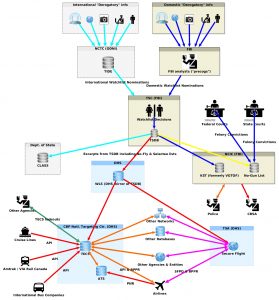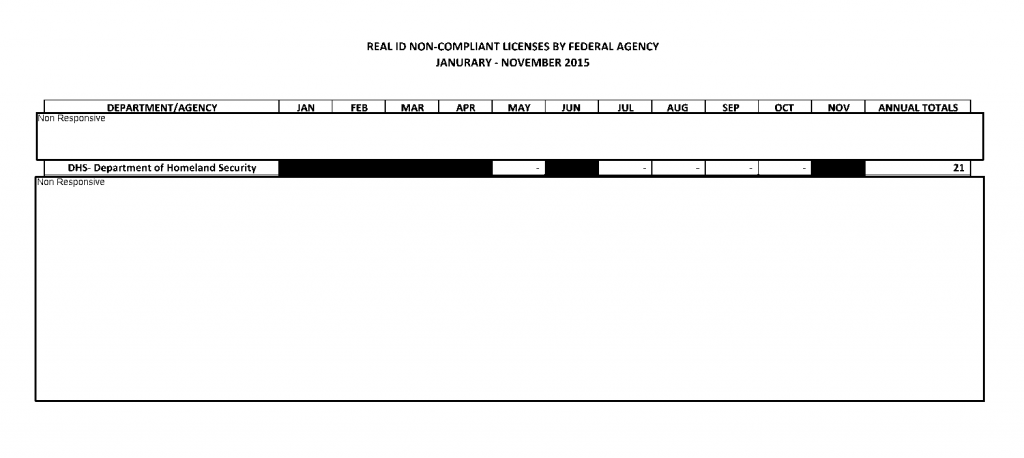DEA recruits airline & travel industry staff to inform on travelers
Brad Heath reports in USA Today that the Drug Enforcement Administration (DEA) has been recruiting airline and other travel industry staff to inform on travelers. The DEA has been using these tips from industry insider informers with access to travel reservations as the basis for searches, seizures, and “civil forfeiture” proceedings to confiscate cash from travelers on the basis of allegations that it was somehow associated with illegal drugs:
USA TODAY identified 87 cases in recent years in which the Justice Department went to federal court to seize cash from travelers after agents said they had been tipped off to a suspicious itinerary. Those cases likely represent only a small fraction of the instances in which agents have stopped travelers or seized cash based on their travel patterns, because few such encounters ever make it to court.
Those cases nonetheless offer evidence of the program’s sweep. Filings show agents were able to profile passengers on Amtrak and nearly every major U.S. airline, often without the companies’ consent. “We won’t release that information without a subpoena,” American Airlines spokesman Ross Feinstein said.
In almost none of these cases has the DEA actually brought any criminal charges against the travelers whose cash has been confiscated:
A DEA group assigned to Los Angeles’ airports made more than 1,600 cash seizures over the past decade, totaling more than $52 million, according to records the Justice Department uses to track asset seizures. Only one of the Los Angeles seizure records included an indication that it was related to a criminal indictment…. Of the 87 cases USA TODAY identified in which the DEA seized cash after flagging a suspicious itinerary, only two resulted in the alleged courier being charged with a crime. One involved a woman who was already a target of a federal money-laundering investigation; another alleged courier was arrested a month later on an apparently unrelated drug charge.
According to USA Today, “The DEA would not comment on how it obtains records of Americans’ domestic travel, or on what scale.” USA Today wasn’t able to identify any of the travel industry informers who have been tipping off the DEA about customers they thought might be carrying cash. But DEA spokesman Russ Baer said DEA agents “receive information from employees at ‘airlines, bus terminals, car rental agencies, … or other businesses.'”
Because airlines and computerized reservation systems don’t keep any access logs, it’s impossible for anyone to tell, after the fact, which travel industry personnel looked at a reservation and might have been DEA informers (or any other sort of attacker or threat: identity thief, stalker, industrial spy, etc.).
Some of the examples reported in USA Today relate to DEA access to Amtrak reservations. In court filings quoted in the USA Today story, DEA agents described their review of reservations for domestic Amtrak travel within the US as “routine”. From one of Amtrak’s responses to our FOIA requests, we know that Amtrak has a special “police GUI” for police to use in mining and reviewing data from Amtrak’s “Arrow” reservation system. We’ve asked Amtrak for all records pertaining to access to reservations by law enforcement agencies. After more than a year and a half, Amtrak is still continuing to process responsive records, as discussed in our previous articles about Amtrak. But Amtrak hasn’t yet disclosed anything to us about DEA access to Arrow or other Amtrak data.
The story in USA Today notes that the DEA isn’t supposed to have access to the information about travelers on domestic flights that airlines are required to transmit to the TSA before they can get permission to issue boarding passes. The TSA has defended the Secure Flight passenger surveillance and control scheme as an administrative search for the limited purpose of aviation safety. But we’ve heard rumors that the TSA is under pressure from other law enforcement agencies to open up the Secure Flight database of domestic air travel itineraries for general law enforcement uses. Those uses would likely include both arrest warrants and lookouts derived from NCIC, and profiling for forfeiture targeting by the DEA.


